Військово-морські сили Італії
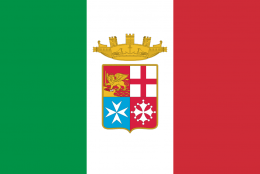
Флот
The Italian Navy (Italian: Marina Militare, lit. «Military Navy»; abbreviated as MM) is the Navy of the Italian Republic. It is one of the four branches of Italian Armed Forces and was formed in 1946 from what remained of the Regia Marina (Royal Navy) after World War II. It is considered a multiregional and a blue-water navy.
The Regia Marina was formed on March 17, 1861, after the proclamation of the Kingdom of Italy. The Italian Navy assumed its present name after the Italian monarchy was abolished following a popular referendum held on June 2, 1946.
After World War II
At the end of its five years involvement in World War II, Italy was a devastated nation. After the end of hostilities the Regia Marina, which at the beginning of the war was the fourth largest navy in the world with a mix of modernised and new battleships, started a long and complex rebuilding process. The important combat contributions of the Italian naval forces after the signing of the armistice with the Allies on September 8, 1943, and the subsequent cooperation agreement on September 23, 1943, left the Regia Marina in a poor condition, with much of its infrastructure and bases unusable and its ports mined and blocked by sunken ships. However, a large number of its naval units had survived the war, albeit in a low efficiency state, which was due to the conflict and the age of many vessels.
The peace treaty
The peace treaty signed on February 10, 1947 in Paris was onerous for Regia Marina. The treaty also ordered Italy to put some ships at the disposals of the victorious nations United States, Soviet Union, Great Britain, France, Greece, Yugoslavia and Albania as war compensation.
The entry into NATO
Great changes in the international political situation, which were developing into the Cold War, convinced the United Kingdom and United States to discontinue the transfer of Italy's capital ships as war reparations. Some had already been dismantled in La Spezia between 1948 and 1955, including the flagship aircraft carrier Aquila. However, the Soviet Union demanded the surrender of the battleship Giulio Cesare and other naval units designated for transfer. The cruisers Attilio Regolo and Scipione Africano became the French Chateaurenault and Guichen, while Eugenio di Savoia became the Greek Helli. After break up and/or transfers, only a small part of the fleet remained to be recommissioned into the Marina. As Western attention turned to the Soviets and the Mediterranean Sea, Italian seas became one of the main sites of confrontation between the two superpowers, contributing to the re-emergence of Italy's naval importance thanks to her strategic geographical position.
With the new elections in 1946, the Kingdom of Italy became a Republic, and the Regia Marina took the name of Marina Militare (Military Navy). As the Marshall Plan began to rebuild Italy and Europe was rapidly being divided into two geopolitically antagonistic blocs, Italy began talks with the United States to guarantee adequate security considerations. The US government in Washington wished to keep its own installations on the Italian Peninsula and relaxed the Treaty restrictions by including Italy in the Mutual Defense Assistance Programme (MDAP). On April 4, 1949, Italy joined the North Atlantic Treaty Organisation (NATO) and, in order for the navy to contribute actively in the organization, the Treaty restrictions were definitively repealed by the end of 1951, with the consent of all of Western nations.
Within NATO, the Italian Navy was assigned combat control of the Adriatic Sea and Strait of Otranto, as well as the defence of the naval routes through the Tyrrhenian Sea. To ensure these tasks a «Studio sul potenziamento della Marina italiana in relazione al Patto Atlantico» (Study about the development of the Italian Navy with reference to the Atlantic Pact) was undertaken, which researched the structures and the methods for the development of the navy.
Presently
In 2012 the Navy began a restructuring process that will see a 21% decrease in personnel by 2025. A new structure was implemented in January 2014.
The Italian Navy is divided into seven corps (by precedence):
- Corpo di stato maggiore – Corps of Staff Officers (SM) (line officers)
- Corpo del genio navale – Corps of Naval Engineering (GN)
- Corpo delle armi navali – Corps of the Naval Arms (AN)
- Corpo sanitario militare marittimo – Maritime Military Medical Corps (MD) for medics; (FM) for Pharmacists
- Corpo di commissariato militare marittimo – Corps of Military Maritime Commissariat (CM) (administration)
- Corpo delle capitanerie di porto – Corps of the Port Captaincies (CP) the coast guard
- Corpo degli equipaggi militari marittimi – Corps of the Military Maritime Crews (CEMM).
Класи кораблів12
 Військово-морські сили Італії
Військово-морські сили Італії  Королівські військово-морські сили Норвегії
Королівські військово-морські сили Норвегії  Військово-морські сили Філіппін
Військово-морські сили Філіппін  Військово-морські сили Португалії (Marinha Portuguesa)
Військово-морські сили Португалії (Marinha Portuguesa)  Морський компонент Збройних сил Бельгії
Морський компонент Збройних сил Бельгії  Військово-морські сили Китайської Республіки (Тайвань)
Військово-морські сили Китайської Республіки (Тайвань)  Військово-морські сили Франції (Marine Nationale)
Військово-морські сили Франції (Marine Nationale)  Військово-морські сили Іспанії
Військово-морські сили Іспанії  Військово-Морські Сили США
Військово-Морські Сили США - Коментарі
 uk
uk en
en ru
ru








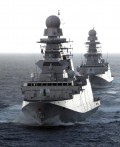



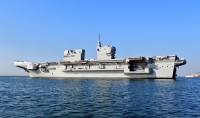
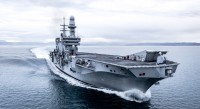
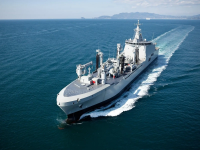
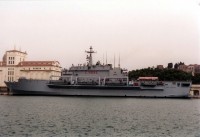
 Військово-морські сили Катару
Військово-морські сили Катару Військово-морські сили Алжиру
Військово-морські сили Алжиру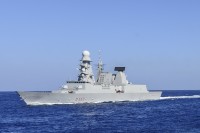
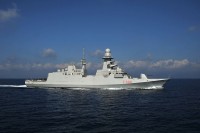
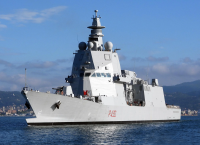
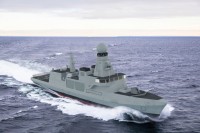
 Військово-морські сили Греції
Військово-морські сили Греції Королівські військово-морські сили Данії
Королівські військово-морські сили Данії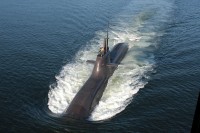
 Військово-морські сили Німеччини
Військово-морські сили Німеччини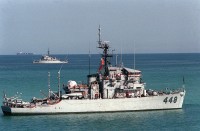
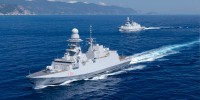
 Королівські військово-морські сили Марокко
Королівські військово-морські сили Марокко Військово-морські сили Єгипту
Військово-морські сили Єгипту